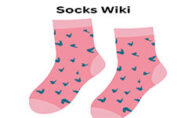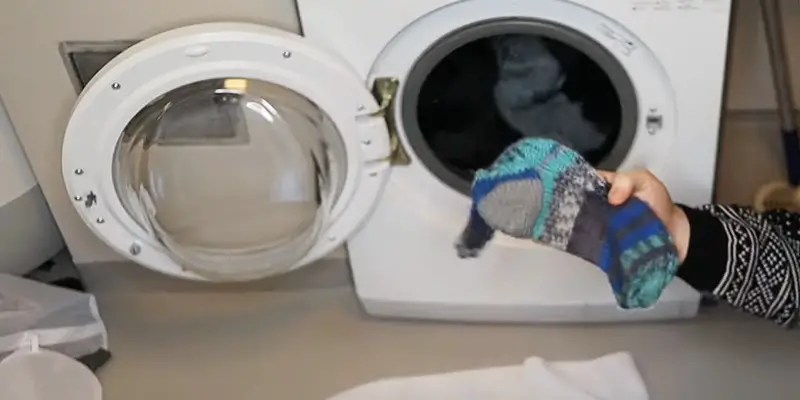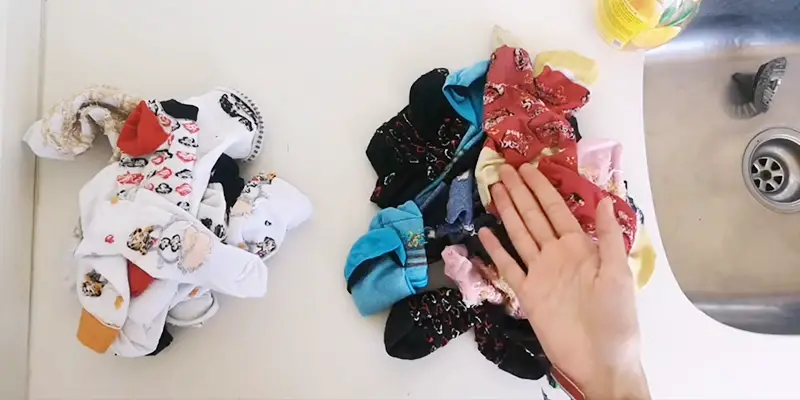Hi, I'm Christopher Bevans, the creator of SocksWiki.com. With a background in fashion design and a passion for innovation, I’m here to share my knowledge on socks from troubleshooting tips to detailed buying guides. I believe the right pair of socks can make all the difference, and through this site, I aim to help you find the perfect fit for every occasion.
Hi, I'm Christopher Bevans, the creator of SocksWiki.com. With a background in fashion design and a passion for innovation, I’m here to share my knowledge on socks from troubleshooting tips to detailed buying guides. I believe the right pair of socks can make all the difference, and through this site, I aim to help you find the perfect fit for every occasion.
Washing wool socks by hand is an art because if you make any mistake, then your wool socks could be damaged, as their delicate fibers require special care to maintain their quality and longevity.
Hand washing is the gentlest and most effective method for cleaning wool socks, preserving their softness and shape.
In this guide, we’ll explore a step-by-step process for hand washing wool socks, ensuring they remain fresh, clean, and cozy wear after wear.
From preparation to drying and storage, mastering the art of hand washing wool socks will extend their lifespan and keep your feet snug in the colder months.
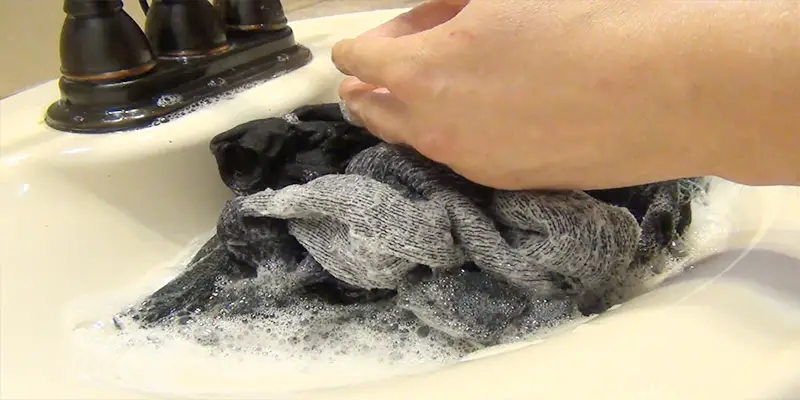
How to Wash Wool Socks by Hand at Home?
Washing wool socks by hand is a simple and effective way to maintain their quality and prolong their lifespan. Wool is a delicate fabric, and traditional machine washing can cause shrinkage and damage.
Here’s a step-by-step guide on how to hand-wash wool socks:
Preparation
Before starting the hand washing process, it’s essential to gather all the necessary materials. Ensure that your sink or basin is clean and free of any residue from previous washes.
Additionally, choose a mild detergent specifically formulated for wool or other delicate fabrics. If you’re uncertain about the detergent’s suitability, opt for one labeled as “gentle” or “wool-friendly.”
Measure the detergent according to the manufacturer’s instructions to avoid using too much, which could leave a residue on your socks.
Pre-soak
As you submerge your wool socks in the lukewarm water, take a moment to inspect them for any visible stains or soiling.
If you notice any stubborn stains, you can apply a small amount of the mild detergent directly to the affected areas before soaking.
Allow the socks to soak for at least 10-15 minutes, giving the detergent ample time to penetrate and loosen dirt, oils, and sweat.

Gentle Cleaning
While gently rubbing the socks together, pay close attention to areas that typically accumulate more dirt or sweat, such as the soles and heels.
Use your fingertips to apply slight pressure when addressing stains or heavily soiled areas, but refrain from vigorous scrubbing, as this could damage the delicate wool fibers.
Take your time during this step to ensure thorough cleaning without causing unnecessary wear and tear.
Rinse
When it’s time to rinse the socks, use lukewarm water to maintain a consistent temperature throughout the washing process.
Ensure that all traces of detergent are thoroughly rinsed out to prevent residue buildup, which can lead to stiffness or skin irritation when wearing the socks.
You may need to change the rinse water multiple times until it runs clear, indicating that the socks are free from detergent.
Remove Excess Water
Gently pressing the socks against the side of the sink or basin allows you to remove excess water without causing undue stress on the wool fibers.
Take care to support the socks evenly to prevent stretching or distortion of their shape. If you opt to roll the socks in a dry towel to absorb additional moisture, choose a soft, absorbent towel and avoid excessive twisting or wringing.
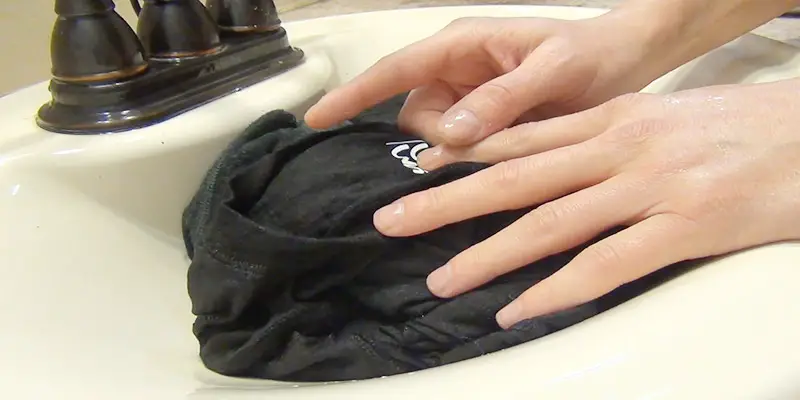
Reshape
While the socks are still damp, take advantage of their pliability to reshape them to their original dimensions. Pay attention to the cuff, heel, and toe areas, ensuring they maintain their intended structure.
Smooth out any wrinkles or folds with your hands, gently coaxing the wool fibers into place. This step is crucial for preserving the socks’ appearance and fit as they dry.
Drying
Lay the reshaped socks flat on a clean, dry towel or drying rack, allowing them to air dry naturally.
Avoid placing them directly on a countertop or other hard surface, as this could cause the moisture to become trapped and prolong the drying time.
Position the socks in a well-ventilated area away from direct sunlight and heat sources, which can accelerate drying but may also cause the wool fibers to become brittle or damaged.
Air Dry
Throughout the drying process, periodically check the socks to ensure they are drying evenly and maintain their shape.
If necessary, gently adjust their positioning to promote proper airflow and prevent any areas from remaining damp.
Depending on the ambient humidity and airflow in your home, wool socks typically require 24-48 hours to dry completely.
Avoid rushing the drying process with artificial heat, as this can compromise the integrity of the wool fibers and lead to shrinkage or distortion.
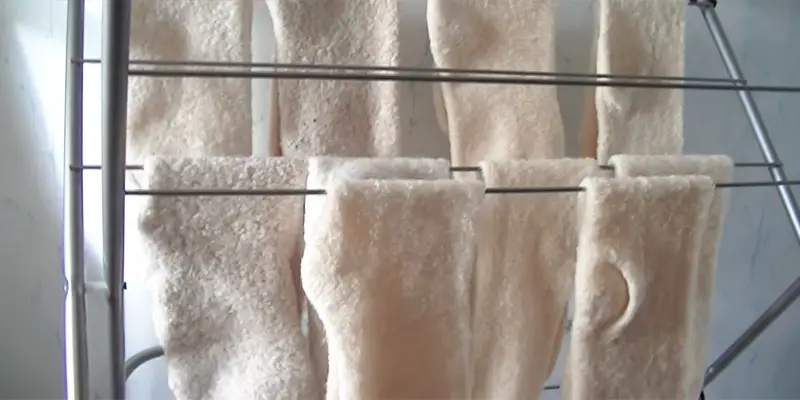
Storage
Once the wool socks are thoroughly dry, store them in a designated area reserved for wool garments. Avoid overcrowding or compressing the socks, as this can cause wrinkles and creases that may be difficult to remove.
If storing the socks in a drawer, consider placing them in a breathable fabric bag or organizer to protect them from dust and potential snags.
Periodically inspect stored socks for any signs of moths or other pests, and take appropriate measures to prevent infestation, such as using cedar sachets or lavender sachets.
Also Read: How to wash wool socks in a washing machine
Benefits of Washing Wool Socks by Hand
Hand washing wool socks offers many benefits compared to machine washing, especially when it comes to preserving the quality and longevity of the socks.
Here are the key advantages of washing wool socks by hand:
Gentle Cleaning
Hand washing allows for a more delicate and controlled cleaning process. Wool fibers are naturally soft and fine, and they can be damaged by the agitation and harsh detergents typically used in machine washing.
Hand washing ensures that the socks are treated with the utmost care, minimizing the risk of stretching, pilling, or felting.
Preservation of Softness
Wool socks are prized for their softness and comfort, and hand washing helps maintain these qualities.
By using a mild detergent and gentle handling techniques, you can effectively remove dirt and oils from the socks without stripping away the natural lanolin, which contributes to their softness.
As a result, hand-washed wool socks retain their luxurious feel, wear after wear.
Prevention of Shrinkage
Wool has a tendency to shrink when exposed to heat and agitation, making machine washing and drying risky for wool garments.
Hand washing in lukewarm water helps to control the temperature and minimize shrinkage.
Additionally, by avoiding the mechanical action of a washing machine, you reduce the risk of the socks becoming misshapen or distorted.
Stain Removal
Hand washing allows you to target stains and soiling directly, using gentle rubbing and spot treatment techniques.
This focused approach can be particularly effective for removing stubborn stains without resorting to harsh chemical stain removers.
By addressing stains promptly and with care, you can help your wool socks maintain their pristine appearance over time.
Environmental Considerations
Hand washing consumes less water and energy compared to machine washing, making it a more eco-friendly option.
By reducing your reliance on washing machines, you can minimize your environmental footprint and contribute to conservation efforts.
Additionally, hand washing allows you to use less detergent, further reducing your impact on the environment.
Personalized Care
Hand washing gives you greater control over the cleaning process, allowing you to tailor the method and products to suit the specific needs of your wool socks.
Whether you prefer a particular type of detergent or have unique concerns such as sensitivity to certain ingredients, hand washing allows you to customize the cleaning experience to your preferences.
Longevity
Perhaps most importantly, hand washing helps extend the lifespan of your wool socks.
By treating them gently and avoiding the harsh conditions of machine washing, you can ensure that your socks remain in excellent condition for years to come.
With proper care, high-quality wool socks can withstand frequent wear and washing while retaining their durability and performance.
FAQs
Should You Wash Wool Socks Inside Out?
It’s generally not necessary to wash wool socks inside out. Wool fibers naturally repel dirt and odors, so washing them right-side-out is sufficient to clean them effectively.
However, if your socks have stubborn stains or odors, turning them inside out before washing can help ensure thorough cleaning.
Do Wool Socks Shrink After Washing?
Wool socks can shrink if washed improperly, especially if exposed to hot water or agitation. To minimize shrinkage, always hand wash wool socks in lukewarm water with a mild detergent, and avoid wringing or twisting them.
What is the Best Soap to Wash Wool Socks?
The best soap for washing wool socks is a mild detergent specifically formulated for delicate fabrics like wool.
Look for a wool wash or a gentle, pH-balanced detergent that is free from harsh chemicals and enzymes. These detergents effectively clean wool socks while preserving their softness and integrity.
How Often to Wash Wool Socks? How Often Do Wool Socks Need to Be Washed?
Washing wool socks every 3-5 wears is sufficient to keep them clean and maintain their quality.
How to Wash Wool Socks Without Washing Machine?
To wash wool socks without a washing machine, follow these steps:
- Fill a sink or basin with lukewarm water and add a small amount of mild detergent.
- Submerge the socks and gently agitate them to clean.
- Rinse thoroughly with fresh water.
- Gently squeeze out excess water and reshape the socks.
- Lay flat to air dry away from direct heat and sunlight.
Wrap Up
Hand washing wool socks offers a gentle, effective way to preserve their quality and comfort.
By following the steps outlined above, including using lukewarm water, mild detergent, and gentle handling techniques, you can ensure that your socks remain soft, clean, and free from damage.
Hand washing minimizes the risk of shrinkage, stretching, and pilling, while also allowing for targeted stain removal and personalized care.
With proper attention and care, your wool socks will maintain their luxurious feel and pristine appearance for years to come, providing you with warmth, comfort, and environmental sustainability with each wear.

Hi, I'm Christopher Bevans, the creator of SocksWiki.com. With a background in fashion design and a passion for innovation, I’m here to share my knowledge on socks from troubleshooting tips to detailed buying guides. I believe the right pair of socks can make all the difference, and through this site, I aim to help you find the perfect fit for every occasion.
- Latest Posts by Christopher Bevans
-
Socks Smell Like Ammonia: Causes and Solution
- -
Best Socks Material for Sweaty Feet 2026
- -
What Socks to Wear With Cowboy Boots?
- All Posts
